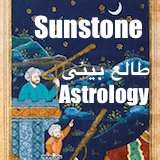The New Yorker:
The rain it raineth every day, as Shakespeare noted, apparently even on Saturn. The cosmos, it seems, is no comfort at this moment.
By Adam Gopnik
If anything seemed solid in a melting and mutable world, surely it was the great big outer planets of the solar system. There they were, Saturn and Jupiter, stately if a little foreboding, hanging around close together, impossibly large and bright, in the Great Conjunction, as it was called, visible for the first time in decades four winters ago, in the pandemic year of 2020. You could go outside then and stare at the gassy planets on the empty streets at midnight, their presence suggesting, if not a benign purpose, then at least a superintending one—the permanence of the cosmos itself—while we chafed and fretted below.
But now news has leaked out—it has been known to astronomers for a while but only recently reached our shared, night-sky-gazers consciousness—that Saturn’s beautiful rings, the one true ornamental element in the solar system, are vanishing. “Ring rain,” it seems, is wasting them away in what is, for a cosmic event, a quick process. Ring rain is just what it sounds like: charged water particles leaking out of Saturn’s rings and raining down onto the planet, diminishing the rings at what astronomers say is an alarming pace. “Saturn Is Losing Its Rings at Worst-Case-Scenario Rate,” an article published by nasa read, and a science Web site bid “Goodbye to Saturn’s Rings,” though the farewell taps will be heard for some time, since that “worst case” turns out to be about a hundred million years—not exactly what we mean by worst-case scenarios down here on Earth, where they tend to entail four-year cycles, if that.
Go to link










Comments